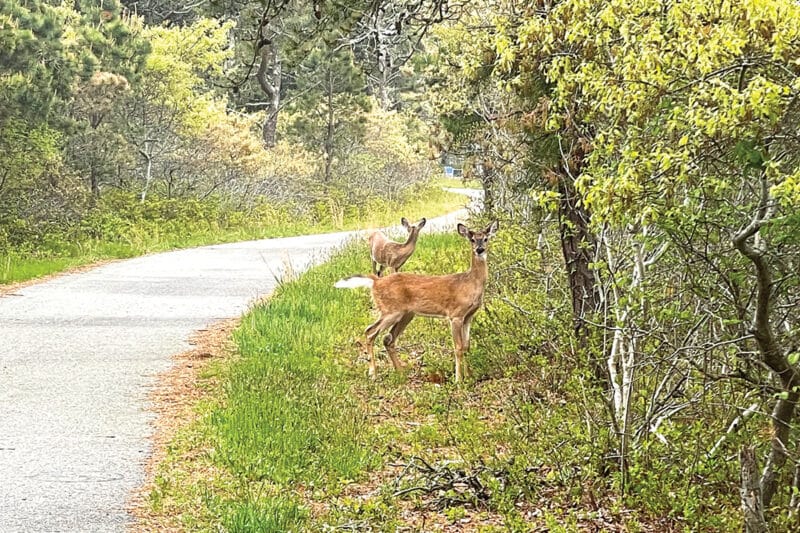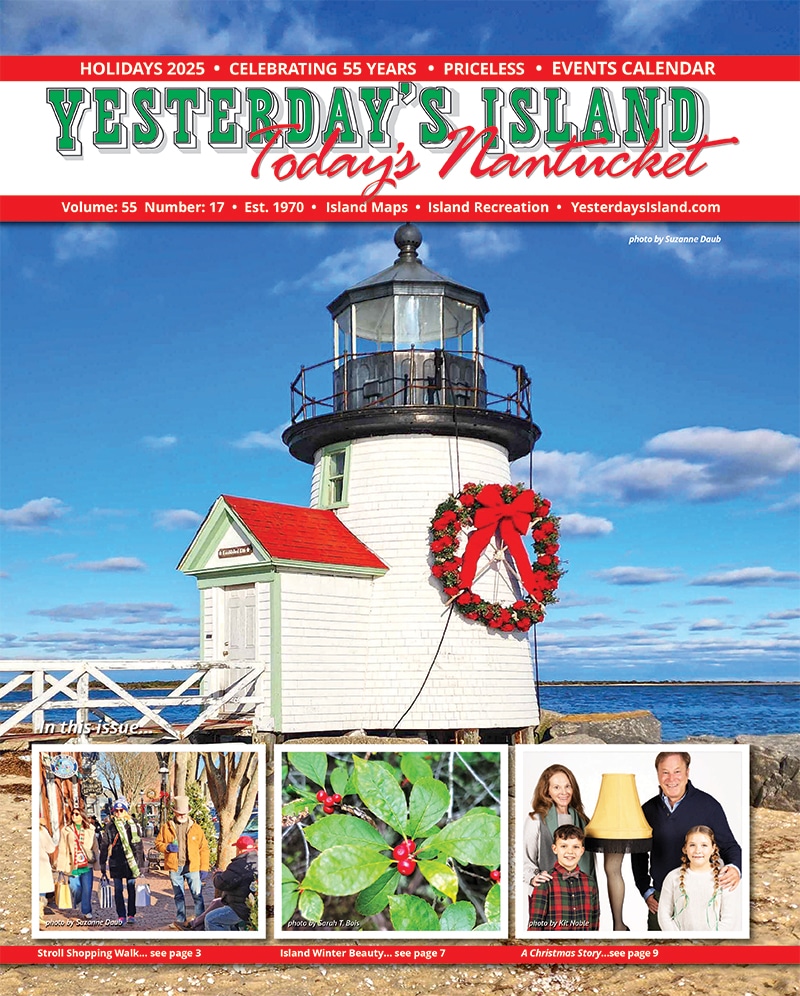by Dr. Sarah Treanor Bois, PhD
Director of Research & Education at the Linda Loring Nature Foundation
A theme of many of my articles is how special and unique Nantucket’s flora and fauna are. Often I highlight rare species that call the island home: endangered plants, rare butterflies, insects, threatened birds… life on-island that makes Nantucket’s ecology unique. Today, however, I am going to discuss the absence of a group of species which gives the island species character: mammals.
Mammals are fur-covered warm blooded creatures. Nantucket is actually known for its lack of mammals more than any particular species. Today, the island is home to more than 25 species of mammals, including seals, but I’m not including whales and dolphins which spend their entire life in the water. That is compared to the 77 or so state-wide land mammals.
People are often surprised that we lack many of the mammals commonly seen just a boat ride away. The ones that I think surprise people most are skunks (not too sad about that), foxes, and maybe raccoons. We don’t even have chipmunks!
So why doesn’t Nantucket have more mammals? Thousands of years ago, after the last glaciation, the sea level was much lower and the distance to the next land mass wasn’t that far. After rising sea levels separated Nantucket from the mainland, isolated populations of mammals like white-tailed deer were likely driven to extinction by indigenous hunters. When English settlers arrived in 1659, there were no deer on the island, and no moose, bears, wolves, foxes, coyotes, skunks, or squirrels either, all of which were still found on the mainland. Currently, 28 miles out to sea, few mammals can recruit to the island unless introduced via humans either accidentally (like raccoons or squirrels in lumber shipments) or on purpose (feral cats).
Today, Nantucket Sound is like a moat, functionally keeping the large mammalian predators from the island. That’s right, there are no foxes, coyotes, mink, fishers, and certainly no bears! Even on Cape Cod, there are coyotes. Looking at the list for Massachusetts, there are multiple creatures labeled “state-wide except for Nantucket County.”
Usually, the more diverse a system is, the better. A higher biodiversity makes a more resilient habitat, for example. However, this lack of diversity of mammals has some consequences to other island flora and fauna which creates a unique set of ecological circumstances. A primary example is with ground-nesting birds. Whether in saltmarshes (sharp-tailed sparrow) or grasslands (northern harriers, killdeer, for example) or on the beaches (piping plovers, various terns, oystercatchers), Nantucket’s lack of mammalian predators makes breeding success for these species much higher. Our island is an important breeding ground for these species.
The absence of predators also means that what we lack for in large mammals we make up for in small mammals. Our populations of various vole, moles, and mouse species are healthy, to say the least. They are well-adapted to our sandy soils and, with so much open space, there is plenty of habitat for them to occupy.
I don’t have the data to show this, but I actually think that the most ubiquitous mammals on island is the eastern cottontail. These are the rabbits that we see everywhere, eating our gardens, crossing roads unexpectedly, and feeding our hawk population. They were actually introduced from the mid-west sometime in the 1940s. The eastern cottontail outcompeted the native New England cottontail, which has now become a rare species. The Nantucket Conservation Foundation did genetic work on our rabbits in 2015 and found that Nantucket is one of the few counties with New England cottontail populations still extant.
Small, herbivorous mammals that live on islands can proliferate without the pressure of predatory species. With no evolutionary pressure to hide from predators, combined with more food available than they need, these small animals can grow in size as well as numbers. There is more research to be done on this for Nantucket, but in other island communities, many small mammal species are larger than their mainland counterparts, primarily due to lack of predatory pressure. On our island, however, our healthy birds of prey like red-tails hawks, harriers, and others may be keeping the smaller mammals in check.
The most unique of the Nantucket mammals isn’t on Nantucket, but on the much smaller island of Muskeget (part of Nantucket County). The Muskeget Vole is actually a subspecies of the meadow vole and isn’t found anywhere else: it is endemic to Muskeget Island. Also known as “beach voles,” the Muskeget voles are known to be much larger than the more common meadow vole.
In addition to the mammals that are currently onisland, several were previously listed which have since been extirpated. Prairie dogs called Nantucket home for ten years with multiple active prairie dog towns before being eradicated in 1900. There was also that one (possibly two) raccoon that was seen for some time in 2015 and again in 2017, but not in recent years. The raccoon doesn’t actually count since an individual doesn’t make a breeding population. Other species, like our white-tailed deer, were re-introduced to the island after being hunted out some time ago.
Because of its presence on Martha’s Vineyard, there was speculation about the presence of river otter on Nantucket. In 2008, otter tracks were photographed at Miacomet pond, and the photo was verified by state biologists, confirming at least one curious otter visitor. A systematic survey was conducted for otters in 2014 with a total of 26 potential sites surveyed for otter activity. The survey team did not locate any otter sign (latrines, scat, tracks, or trails). However, it was determined that there is ample habitat here to support an otter population should they become established. I, for one, would love to see an otter on-island!
Other introduced species have established breeding populations on-island and are now part of the fauna. Norway rats were brought over with ships as they have throughout the world. It was almost inevitable with Nantucket’s central role in the whaling industry. Gray squirrels were introduced around 40 years ago and have small populations in multiple areas of the island, but not everywhere.
I mentioned the lack of predators earlier, but one predator has been introduced: feral cats. These aren’t just outdoor house cats. There are known populations of feral cats that have multi-generational groups living in the wilds around the island. Introducing a predator like a feral cat to an island fauna unaccustomed to such predators can have serious consequences. Feral cats are known to be a primary predator for shore bird nests such as piping plovers, oyster catchers, and terns. They are also known to feed on small mammals, on birds at bird feeders, and to cause harm to other wildlife. It’s a huge problem on island, and I encourage people to keep their house cats indoors, don’t feed stray cats, and never release pets into the wild.
We do have one other mammalian predator which is technically on-island: a fisher. In truth, it is a specimen at the Maria Mitchell Association as part of their scientific collection. It had been found on Nantucket, dead and washed up on the beach. Still, a fun fact for trivia night!
If you see an interesting mammal, please take a photo and share it with us! And if you see a raccoon, definitely let me know at stbois@llnf.org



